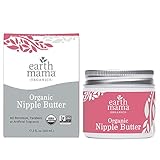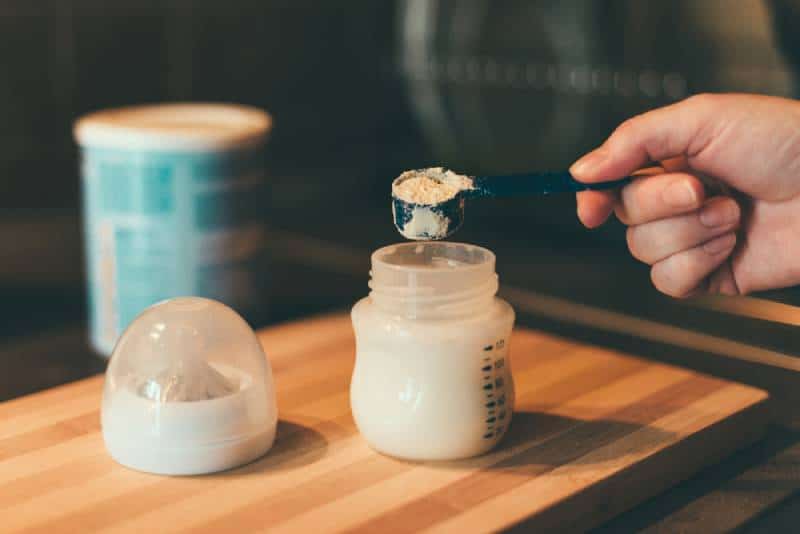When your baby is born, most new mums have a choice: breast or bottle. From a financial point of view, it certainly seems that breastfeeding saves money, but is this really the case?
Potentially, more important is how breastfeeding really can save lives—and we’re not just talking about the life of your baby.
Let’s take a look at how breastfeeding saves money and lives.
The Cost Of Bottle-Fed Babies

The United States Department of Agriculture estimated in 2015 that the cost of raising one child until the age of 17 is approximately $233,610, approximately $12,980 per year.
When you consider this, an estimate of $1,500 on formula milk in the first year of your baby’s life may not seem so bad.
Of course, the first year also sees significant expense in preparing yourself and your home for the baby.
So saving money matters!
If breastfeeding saves money, then you would expect it to cost less than the $1500 you’d spend on formula milk.
In fact, on the face of it, breast milk is completely free, making an impressive saving in the first year of your baby’s life.
But, there are indirect costs associated with breastfeeding—the biggest and most obvious of which is nutrition.
Nutrition For Breastfeeding

Not only do you need to increase your nutritional intake, but you’ll also need to avoid certain foods that could negatively influence your baby.
RELATED:
- What Not To Eat When Breastfeeding: Specific Foods To Avoid
- Lactogenic Food: Top 20 Ingredients For A Better Milk Supply
Fish is one that you should limit, as are caffeinated drinks.
Ideally, you should avoid processed foods and stick to whole foods, maintaining a balance between carbohydrates, protein, and a little healthy fat.
But, your baby may have a sensitivity to food that won’t be obvious until after they’ve been breastfed.
For example, babies that don’t feed well and don’t put on weight may have a milk allergy.
You’ll need to verify this with your health professional and may need to cut dairy out of your diet while breastfeeding.
It is worth noting that increasing the quality of your nutritional intake is not the same as eating more.
Most women don’t need extra calories as the fat stores which have developed during pregnancy can be used to create the breast milk.
You simply need to make sure you’re getting all the essential nutrients.
Equipment
Other costs to be aware of include nursing bras and pads. A bra can cost as much as $100 and a box of pads $5.
You’ll also want storage bags, a breast pump (although this should be covered by your insurance health care costs), and nipple cream.
If you’ve ever breastfed, you’ll appreciate how sore your nipples can get!
Additional items include a nursing pillow and modesty drape for breastfeeding in public.
Although these are not essential, they do make life easier for nursing mothers and new moms.
You may also need to speak to a lactation consultant or if you have complications, even the surgeon general’s office (in view of their “Call to Action” to support breastfeeding in the US).
In fact, these breastfeeding costs can equal as much as $1,000 a year. This doesn’t take into account any loss of earnings incurred while breastfeeding.
You can check the exact prices you from our top picks for breastfeeding essentials:
| Image | Title | Price | Prime | Buy |
|---|---|---|---|---|
 | HOFISH Women's Wireless Breastfeeding Nursing Bras | PrimeEligible | Buy Now | |
 | Lansinoh Stay Dry Disposable Nursing Pads for Breastfeeding, 200 count | PrimeEligible | Buy Now | |
 | Bellababy Double Electric Breast Feeding Pumps | PrimeEligible | Buy Now | |
 | Organic Nipple Butter Breastfeeding Cream | PrimeEligible | Buy Now | |
 | Boppy Original Nursing Pillow and Positioner, Notebook Black and Gold | PrimeEligible | Buy Now |
Of course, it still shows that breastfeeding saves money, but maybe not as much as you think it will.
It should be noted that while the cost of formula feeding is approximately $1,500, this is only the formula for your formula-fed baby.
You’ll have to purchase bottle, brushes, and sterilize them between uses.
This will increase the cost of formula feeding and the savings you can enjoy when compared to breastfeeding costs.
The difference in cost can make a substantial difference in the first year of your baby’s life.
After all, there are so many other things that you need to purchase.
The Benefits of Breastfeeding

Disease
You’re probably already aware that breastfed babies take some of the antibodies from their moms.
This boosts their immune systems and reduces the risk of disease and infections.
As a result, there are fewer visits to the doctors or hospital with your baby—which also reduces the chances of them contracting an infection.
Breastfeeding also reduces incidents of diarrhea, vomiting, and even sudden infant death syndrome, (SIDS).
In fact, recent research also suggests that breastfed babies are less likely to be obese and will have a reduced risk of cardiovascular disease later in life.
Breastfeeding saves money, but this health gift is a great way for a baby to start their life.
This is one of the ways in which breastfeeding really does save lives.
Babies that fall ill are more likely to be exposed to other potentially harmful bacteria and, with weakened immune systems, they are more likely to experience other issues.
These issues can range from simple coughs and colds to life-threatening conditions.
It’s essential to note that babies have very poor immune systems, so you need to do everything you can to protect and nurture them.
Bonding

This bond is intensified when you breastfeed. When you breastfeed your baby, there is a large amount of skin-to-skin contact.
This increases the levels of oxytocin in both your bodies. Research shows that this hormone encourages positive interactions.
It also helps you to feel closer to your baby and reduce the likelihood of postnatal depression.
Mom’s Health

Studies show that mums who breastfeed have a lower risk of diabetes, reduced blood pressure, a decreased likelihood of heart disease, a reduced risk of ovarian cancer and potentially lower cholesterol levels.
However, exactly how this happens is not yet clear.
Theories include increased calorie burn thanks to breastfeeding, or that breastfeeding encourages weight loss and a healthy approach to life post-pregnancy.
Breastfeeding can also reduce your risk of contracting breast cancer, osteoporosis or becoming obese.
Don’t forget that obesity is linked with an increased risk of type 2 diabetes. Breastfeeding can reduce this risk.
Weight Loss

Obesity kills. Research shows that obese people are more likely to die early and have a reduced quality of life.
Studies also show that breastfeeding burns 200-500 calories, increasing your ability to lose weight post-pregnancy.
By itself this may not be enough to prevent you from becoming obese, but it is a step in the right direction, and starting to lose weight generally encourages more weight loss.
While exclusive breastfeeding is best, you’ll still experience these benefits if you breastfeed and use infant formula.
Time

However, the time spent breastfeeding is more than just a bonding experience.
Being a new parent can be exhausting.
Breastfeeding actually gives you a few moments of time out when you can relax and unwind.
Just as experts say you should sleep when the baby does, you should also consider reading while you breastfeed.
It will de-stress you which is great for your health and the baby.
Plus, you need to remember that breast milk is much easier for a baby to digest than any other option.
Alternative Options

Some babies will not take the breast. Some new mums are unable to produce milk, or there can be sickness/allergy issues.
There are even time-constraints connected to work that can reduce or eliminate your opportunity to breastfeed.
Fortunately, there are several other options available.
Although all of them are likely to cost more than breastfeeding, that doesn’t mean they are a bad option.
Formula Milk
- Contains 24 2 fluid ounce bottles of ready to feed baby formula milk
- Enfamil NeuroPro is the only baby formula that has a fat protein blend of MFGM and Omega 3 DHA, previously only found in breast milk
- Emerging evidence from a recent clinical study showed MFGM in baby formula supports cognitive development similar to breast milk
Prices pulled from the Amazon Product Advertising API on:
Product prices and availability are accurate as of the date/time indicated and are subject to change. Any price and availability information displayed on [relevant Amazon Site(s), as applicable] at the time of purchase will apply to the purchase of this product.
We’ve already touched on formula milk.
The powder is created by large companies and formulated to include all the nutrients a baby needs.
There are plenty of different formulas available, depending on your budget and your preference or the preference of your baby.
But, some formula milk contains a high level of corn syrup solids, hydrogenated oils, and sugar.
If this is a concern to you, then you can look at organic formula options.
These are formulas that use organic ingredients and have no preservatives.
They are closer to breast milk than most formulas, but also more expensive, effectively reinforcing that breastfeeding saves money.
Donated Breast Milk

If you want to breastfeed but are unable to produce the required milk, going to breast milk banks is the best alternative to baby formula.
The milk in these banks is collected from mothers that produce more than they need. It is carefully stored to ensure the milk remains good.
All donors are screened for diseases, including HIV and syphilis.
The donation is frozen as soon as it is completed, and the frozen milk is collected from the donor before being pasteurized and frozen until you need it.
To pasteurize it, the milk is heated to 62.5°C (144° F) for 30 minutes.
This kills the bacteria without damaging the valuable nutrients. It can even help to boost the immunity level in your baby.
Homemade Formula

This is actually becoming a popular option as you’ll know exactly what you’re feeding your baby.
You’ll need to decide on a base milk and then add real food to it, blending it all to a smooth liquid that your baby will be able to drink and thus, absorb the nutrients.
The simplest method is to use cow’s milk with plenty of vegetable oils. These are high in unsaturated fats which are essential for new babies.
You may want to add some vitamin supplements and gelatin or probiotics.
This will ensure your baby can easily digest the milk and will get all the nutrients it needs.
Of course, if you’re making your own formula to replace breast milk, you’ll need to make sure all the ingredients are acceptable for the digestive system of babies.
Options For Your Infant

Research suggests that it’s best to wait until they are one year old. You’ll then have to decide which milk option suits your lifestyle, beliefs, and budget.
Cow’s milk is not the only option:
- Goat’s Milk
A viable alternative that is surprisingly close to human milk for your infant.
- Coconut Milk
This option is high in fat and will help your infant to grow, but it won’t have all the nutrients they need. You’ll need to add supplements.
- Hemp Milk
Hemp milk is made from the seeds of the plant and doesn’t have the mind-altering properties of the mature plant. Again, it may not provide all the nutrition your infant needs.
- Soy Milk
The jury is still out on soy milk, with some people professing how great it is and others suggesting it is potentially dangerous.
It is a viable alternative, especially if you want to go gluten and dairy-free.
But, you’ll need to take a look at the research yourself first.
Final Thoughts On Breastfeeding Saves Money

Unfortunately, it’s not always a viable option which is why it’s important to be aware of how much formula costs.
In these instances, you’ll need to decide which of the above alternatives suits your busy schedule and your outlook on life.
But, in all cases, if your baby is not putting on weight, is suffering from diarrhea or constipation, and appears ill, you need to see a medical professional and may have to change the formula you’ve chosen.
After all, putting cost aside, it’s what’s best for your baby that really counts.
You should also remember that, while you are certain you know what is best for your child, their bodies are not the same as yours.
Getting the food intake right in the first two years of their life is essential for future development.
If you’re moving away from traditional feeding techniques, consult with health professionals to ensure your baby is getting everything they need and staying healthy.
As a parent, that’s your most important consideration, not the cost of the product.
The simple fact is that breastfeeding saves money, but it’s not possible for every mum.
That’s why you need to be aware of your options and the health benefits.
This will help you to stay healthy while looking after your baby properly.
Like this article? Please share or pin it for later. You can also stay in the loop and follow me on Facebook, Instagram or Pinterest.

We love honesty! Find Your Mom Tribe is an Amazon Associate and we earn from qualifying purchases through affiliate links at no extra cost to you. Please see our full Amazon Affiliate disclosure for more information.

